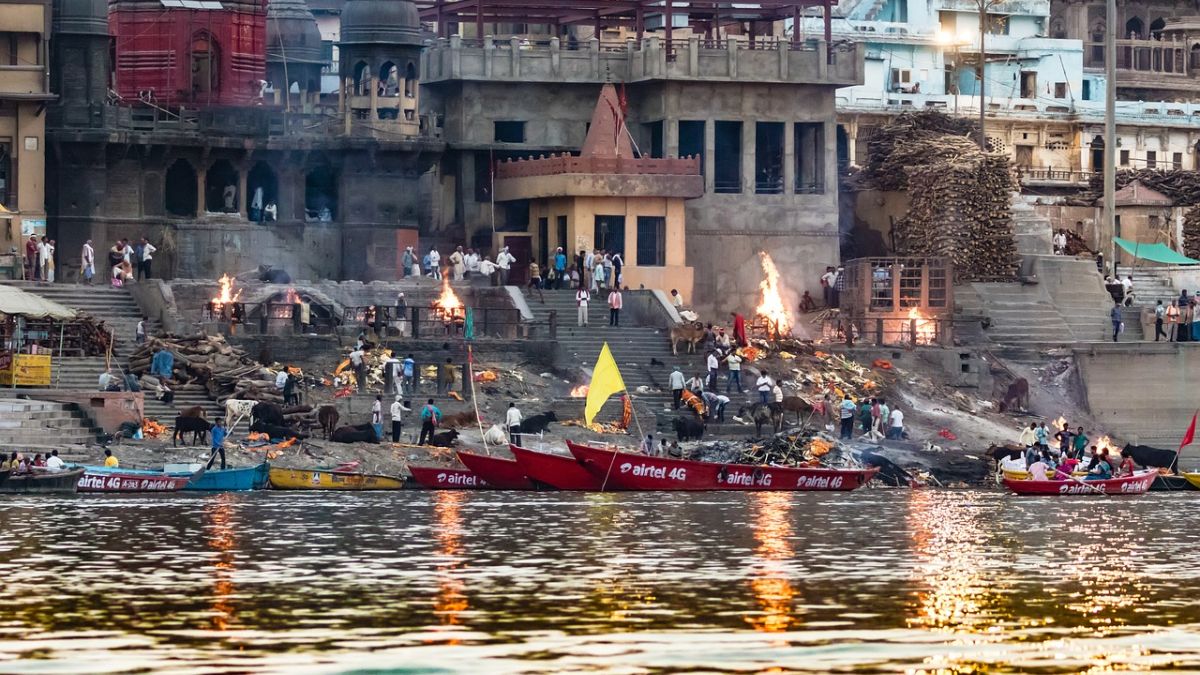Varanasi, the spiritual heartbeat of India, holds within its ancient streets and riverbanks a tapestry of lesser-known facts that enrich its profound cultural legacy. Beyond its religious significance and bustling ghats lies a treasure trove of hidden gems waiting to be explored.
City of Shiva
Varanasi, also known as Kashi or Benares, is one of the oldest living cities in the world and is believed to be the earthly abode of Lord Shiva, the Hindu deity. It’s revered as a sacred place of immense spiritual power.
Insight: The city’s essence lies in its spiritual aura, drawing pilgrims and seekers from across the globe seeking blessings and enlightenment.
The Mystical Kashi Vishwanath Temple
Nestled within Varanasi’s labyrinthine alleys stands the Kashi Vishwanath Temple, dedicated to Lord Shiva. Its sacred Jyotirlinga (lingam of light) holds immense religious significance for Hindus.
Insight: The temple, destroyed and rebuilt several times throughout history, symbolizes the city’s resilience and unwavering spiritual fervor.
The Hidden ‘Kachori Gali’
Varanasi isn’t just about spiritual fervor; it’s a food lover’s paradise. ‘Kachori Gali,’ a narrow alley, is renowned for its delectable kachoris (savory pastries) and other local delicacies.
Insight: Exploring the culinary delights of Varanasi unveils a vibrant street food culture intertwined with the city’s everyday life.
The Fascinating Ramnagar Fort
On the eastern bank of the Ganges stands the Ramnagar Fort, home to the Kashi Naresh (King of Kashi) since the 18th century. The fort’s museum exhibits vintage cars, royal artifacts, and an eclectic collection.
Insight: Ramnagar Fort preserves Varanasi’s regal heritage, offering a glimpse into its princely past amidst the spiritual fervor.

The Enigmatic ‘Manikarnika Ghat’
Manikarnika Ghat, one of Varanasi’s holiest cremation ghats, holds a belief that cremation here guarantees liberation from the cycle of rebirth. Its name is derived from a mythological earring dropped by Lord Shiva.
Insight: The ghat’s significance in Hindu beliefs intertwines mortality with spirituality, offering a unique perspective on life and death.
The Akhara Tradition
Varanasi nurtures the ancient tradition of ‘Akhara,’ where wrestlers gather to practice Kushti, a traditional form of Indian wrestling, maintaining a legacy that dates back centuries.
Insight: These Akharas embody discipline, physical prowess, and cultural heritage, reflecting a different facet of Varanasi’s traditions.
The Rich Silk Weaving Tradition
Varanasi is renowned for its Banarasi silk, intricately woven with gold and silver threads. The art of weaving silk sarees here dates back centuries and continues to be a symbol of luxury and tradition.
Insight: The Banarasi silk industry stands as a testament to Varanasi’s craftsmanship and artistic heritage passed down through generations.
The Sankat Mochan Hanuman Temple
This temple, dedicated to Lord Hanuman, is believed to have been established by the revered saint Tulsidas. It’s considered a sacred site for seeking solace from troubles and obstacles.
Insight: The temple’s spiritual aura attracts devotees seeking strength and guidance, embodying the city’s spiritual essence.
The Musical Traditions of Varanasi
Varanasi is a cradle of classical Indian music, nurturing renowned musicians and sustaining musical traditions like the Dhrupad and Kajri styles, fostering a rich musical heritage.
Insight: Exploring the musical heritage of Varanasi unveils the city’s cultural depth and artistic legacy beyond its spiritual realm.
The Submerged Temples of Varanasi
During the monsoon season, the receding waters of the Ganges reveal the spires of submerged temples, a silent testament to the city’s ancient past and ever-changing river dynamics.
Insight: These submerged temples narrate the story of Varanasi’s historical evolution, submerged and resurfaced by the mighty Ganges over millennia.
Varanasi’s allure transcends its spiritual significance; it’s a tapestry woven with threads of history, tradition, and profound spirituality. These lesser-known facets paint a more intricate portrait of the ancient city, inviting exploration beyond its iconic ghats and temples, revealing layers of cultural depth and timeless heritage.










